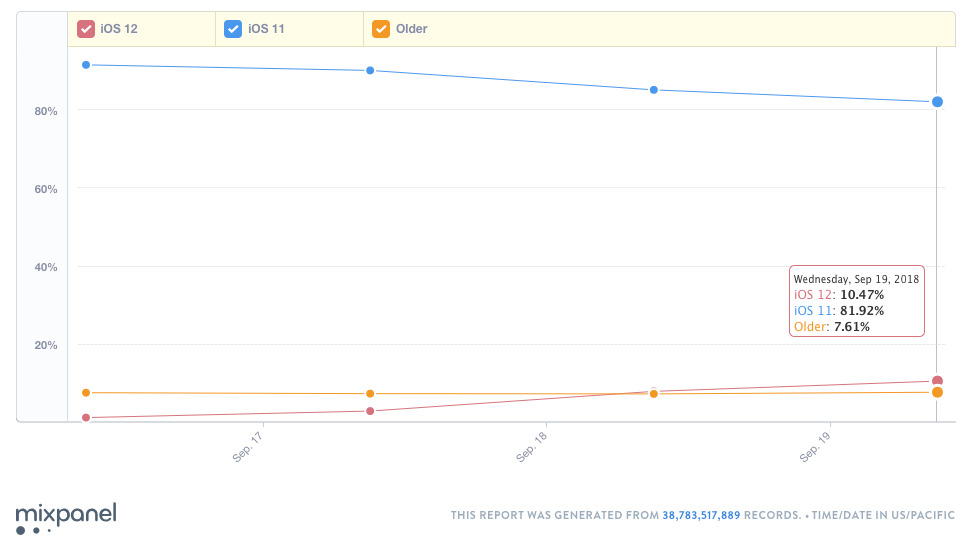Installation rate for iOS 12 slightly trailing iOS 11 in first 48 hours after release
One in ten iOS devices have been updated to run iOS 12 in the first 48 hours after its public release, according to data from one analytics firm, with the adoption rate putting the latest version of Apple's mobile system slightly behind that of the previous milestone release, iOS 11.
The release of a new iOS version typically leads to a flood of users acquiring it as an update for their existing iPhone or iPad, or following the company's annual September event, through buying a new iPhone. According to the data collected by analytics firm Mixpanel, the early results of the release are following a well-worn path for installations.
According to Mixpanel's iOS adoption graph, 2.8 percent of all iOS devices measured by the firm had iOS 12 installed on September 17, the day of its release. It is unclear exactly what time in the day the data is counted from, and the figure may also include people who installed the beta version in days beforehand, which the chart suggests makes up 1.13 percent of all devices.
Approximately 24 hours after release, iOS 12 installations hit 7.83 percent, followed by 10.38 percent the next day.
For iOS 11, the data indicates it was on 1.58 percent of devices on Sept. 18, 2017, the day before its release, then the total rose to 4.14 percent percent on the day of release, 11.29 percent the next day, and 15.91 percent two days after launch. On face value, this suggests iOS 12 is shifting at a slower rate when compared to the previous release.
It is unclear how reliable the data is, as details such as the timing of each day's count could affect the reported results, while the sourcing of the data is likely to be sourced externally from Apple, adding more ambiguity. Even so, the data does at least indicate that there is a level of installations for iOS 12 in roughly the same ballpark as iOS 11, at least this shortly after its release.
Apple does occasionally issue adoption rate updates, based on data collected by iPhones contacting the App Store and the company's other services, allowing it to be extremely accurate with its own results. According to its most-recent published results on Sept. 3, iOS 11 made up 85 percent of all iOS-compatible devices, while iOS 10 was running on 10 percent.
 Malcolm Owen
Malcolm Owen












 William Gallagher and Mike Wuerthele
William Gallagher and Mike Wuerthele
 Christine McKee
Christine McKee
 William Gallagher
William Gallagher

 Marko Zivkovic
Marko Zivkovic









